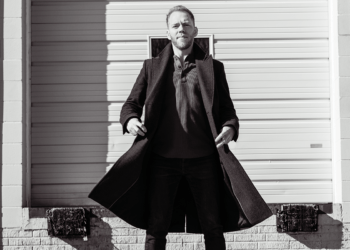This is the first in a series on artists in residency at The Bemis Center for Contemporary Arts.
Christy Chan was at the tail end of her residency when we spoke; it started Sept. 20 and ended Nov. 17. The theme was Art, Empathy, and Ethos. The artist and storyteller is now back home in Oakland, California.
Christy Chan says she enjoys the view from her room at the Bemis Center for Contemporary Arts, even though it faces the train tracks downtown.
“I actually really like it,” she says. “I think trains are romantic.”
Chan lived at the Bemis for two months in the fall while doing a residency there. She is an interdisciplinary artist who enjoys telling stories through video, audio, performance, and installations. The Bemis residency offers her a chance to work on her latest project and to do all the things she doesn’t necessarily get to focus on at home. Perhaps most importantly, it provides her a unique experience.
“I was really intrigued to come here, because I’ve lived on two coasts, I’ve lived abroad, but I’ve seen more of other countries than I have of this country,” she says.
Aside from her general curiosity, Chan says she also felt that living in a time when politics are so polarizing, it was important to see more of the country.
“Because I do work about class and race and power, specifically in the United States, it’s important that I see more of it…I think it’s easy for different groups of people, different areas of the U.S., to be ‘cartoonized,’” she says, adding that this is something that happens all over the world and is not unique to this country.
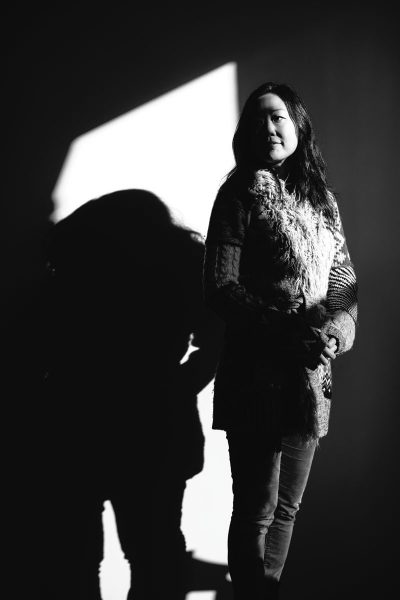 She was familiar with the Bemis residency program and even applied four years ago. This time around, she applied because the themes seemed like a perfect fit.
She was familiar with the Bemis residency program and even applied four years ago. This time around, she applied because the themes seemed like a perfect fit.
Chan’s experience with the themed residency exemplifies the goal of the program. She says she enjoys meeting all the artists. The fact that the theme is empathy and they all lay claim to that attachment in their work gave them a lot to talk about.
Chan says a residency gives her the opportunity to step out of the day-to-day routine of her nine-to-five job as a freelance film producer. “The thing I love about residencies is going somewhere and having a natural response to the environment and stumbling onto things that I become curious about,” she says. “I think that really feeds my work.”
Though she’s working on multiple projects at the Bemis, she is developing a project called “Everybody Eats Lunch.”
“I guess most artists would call it a social practice project, to use fancy words, but I just call it a community art project.”
Chan’s parents were Chinese immigrants who owned a Chinese restaurant in her hometown in Virginia. She says she grew up seeing how coming together for a meal breaks down walls. “It just does,” she says. “Gathering and eating and talking is just part of our human nature.”
She says the plan is to have the project open to anyone and everyone who wants to participate.
Chan launched the project here, when she met with two Omahans. She also has friends in Oakland and New York who are participating, but hopes to see it spread far beyond that. “Right now, it’s sort of unfolding in this organic way,” she says.
For her two lunches here, she says Block 16 agreed to sponsor them. Come spring, there will be an official website where people can view those lunches and more.
She says the idea is to record the lunch conversation, and, if you’re comfortable doing so, taking a picture with each other. If not, she suggests taking a picture of the food you’re eating together. “No matter who we are or where we come from,” Chan says, “we all come together over food and conversation and that’s something we all share.”
“I really want to give people some freedom,” Chan says, “because it’s not about how good a photographer you are…it should be as easy as recording it on your phone. And the pictures don’t have to be great.” She says the idea is to collectively create a larger conversation that people will listen to, with one conversation leading to another.
“The premise of it is coming from the fact that we keep hearing that we live in this polarized time, how we’re all in these echo chambers,” Chan says, “not just because of digital media, but because we are on digital media all the time. That in itself is its own echo chamber.”
Chan says in an ideal world, you would be able to meet and talk to anyone, or just go deeper in a conversation with someone you already know.
“Politically, conversations are very polarized. I think there’s truth to that,” she says. “The idea of it is just to have lunch with somebody you wouldn’t normally have a conversation with, someone you consider a stranger and, for whatever reason, they at first seem too different from you, you haven’t had a connection…my intention is to give people an excuse to notice who’s around them and feel more connected to the people around them. It might be that someone has different political views or values. I think that will be interesting to see how these lunches go.”
She adds, “As all these really heated, political things are happening, it might feel good to be connecting in a way that’s just one-on-one.”
Chan says that for her, the project has made her think about all the people she sees everywhere, every day, who she hasn’t had a conversation with. “Everyone has a story,” she says, “everybody has something interesting about their life.”
“A lot of my work is really about humanizing who people are, sort of stripping away the easy categories—age, race, gender, sexuality, and just humanizing who we are,” she says. “So, I was really excited to come here.”
Chan says she’s been driving around Nebraska, even heading into South Dakota, looking at different points of interest. She finds homesteads particularly fascinating, and even planned a trip to Homestead National Monument of America near Beatrice.
“I don’t know when I’ll be back here again, so I want to see everything,” she says. “It’s been a really great place to do research and just feel inspired.”
As a storyteller, she says seeing the pioneer history and how that story was told interested her because a lot of her work revolves around that—storytelling and looking at the ways stories are scripted into our culture, whether they’re right or wrong. “A lot of my work is about using stories to subvert stories, or to create a fuller picture.”
Chan says that as she’s been exploring, she’s been making video and audio recordings. She has also read and reread a lot of books written about and set in the Midwest, from graphic novels, to autobiographies of Native Americans who were forced to go to boarding schools and assimilate, and even the Little House on the Prairie books.
“It’s felt really special to be here and see where a lot of things have happened in history.”
Chan says it’s important to look at things with a critical eye, as far as what are the narratives being told.
“Something that really blew my mind once I got out here and I was looking at where everything was, was realizing that where the Little House on the Prairie books, where those stories were set, were right next to the Pine Ridge Indian Reservation, and that essentially those two stories are related,” she says. She finds it interesting how those two narrativesrare represented.
While she obviously made that connection before, she says she felt it in a much more visceral way when she saw the land, adding that it’s different to be able to read the book and then drive over to see the site.
“The fact that we have, not just the Little House books, but other books that create this narrative of what we think our history is,” she says, “but there’s this other narrative that’s also completely true, and they coexist together…rit’s complex.”
Besides traveling around Nebraska to get a sense of what this part of the country looks like, she’s also been visiting art museums and galleries to see how stories are represented there.
“I feel like sometimes seeds get planted while in residency, and then later on, they take form. I feel that might happen here as well,” she says. “When I’m in a new place and something’s pulling me to look at it, I just kind of try to trust that feeling…and go with it.” 
All About the Residency
Holly Kranker is the residency project manager at the Bemis Center and has been with the program since 2013. She says themed residencies (like this year’s: Art, Empathy, and Ethos) are somewhat new to Bemis. This year marks the third one.
Kranker says two years ago, they started residency schedules, with the artists arriving and leaving at the same time, in a three-month block. In the past, the Bemis would have artists coming and going frequently, Kranker says, so they wanted to create more of a cohort.
Kranker says they wanted the residents to have a richer experience with the other artists they were meeting, “so it would be more fulfilling and give them a chance to really get to know each other.” She says residency blocks usually run from January to April, and May to August, with themed residencies developed by their artistic director lasting just two months—from September until November.
Previous themes were Future of Food, Sci-fi, and the Human Condition. For now, the future of the thematic residencies is unknown. However, their regular residencies will continue.
Kranker describes the process of getting a residency as a two-panel process, with three panelists each. The first panel is given criteria to look for, including whether it’s contemporary, consistent, aesthetic, and whether the artist has a true command and understanding of the work they’re doing.
During the second wave, they tally up the first panel reviews and the top-scoring applicants move on. She says the top applicants end up being roughly 20 percent of the pool.
“For a full residency year, we generally receive around 1,000 to 1,100 applications. Of those, we’re able to place roughly 36 artists in the residency per calendar year.” This is about 3 to 4 percent of the total pool.
Unfortunately, Kranker says they won’t have a thematic residency for 2018. However, that’s not to say they won’t ever have them again.
“Residencies are a living, breathing thing and we’re always evaluating and being responsive to what artists needs are in contemporary art.” 
Visit christychan.com to learn more about the artist. To learn more about the project, go here everybodyeatsclunch.com.
Visit bemiscenter.org to find out more about the residency program.
This article appears in the January/February 2018 edition of The Encounter.


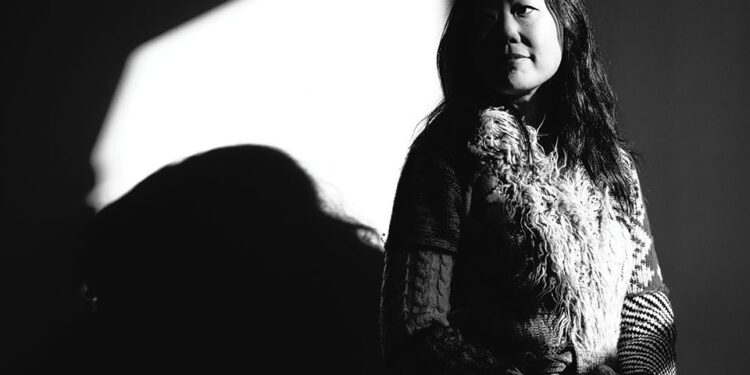





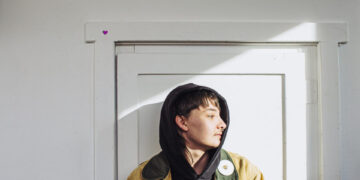

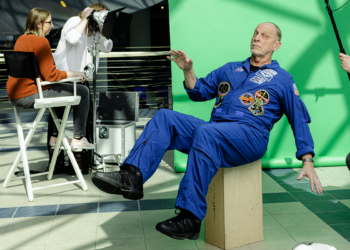
![[L to R] Daisy Hutzell-Rodman, Julius Fredrick, Kim Carpenter.](https://www.omahamagazine.com/wp-content/uploads/sites/2/2024/04/BTL-350x250.png)

